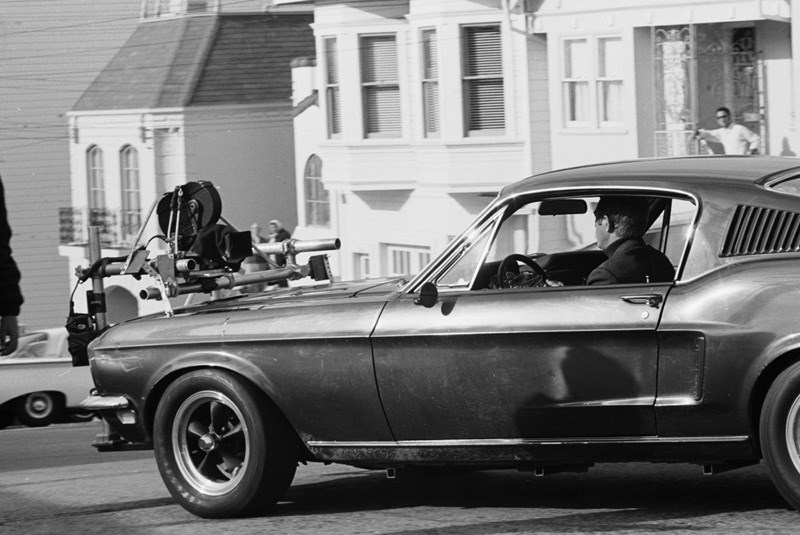A biweekly roundup of automotive news, good, bad and just plain weird:
Bullitt Mustang found in scrapyard
Of all the movie cars out there, Steve McQueen’s dark-green Mustang has to be one of the best. Featured in the 1968 detective flick Bullitt, the Mustang is the hero of one of the best chases in film history, hammering through San Francisco in hot pursuit of the bad guys in their Dodge Charger.
But for a long time, the original Bullitt Mustang has been missing. That all changed the day the phone rang at Marti Auto Works near Phoenix, Ariz. The voice on the other end of the line asked for some information on a car he had in his scrap yard. When he heard the serial number, Frank Marti froze.
Marti knew the number by heart from people calling in trying to build clones faithful to the original Bullitt build sheet. In this case, the caller claimed to own the car. And, when questioned, he had no idea that it was the original movie car.
Marti flew down to Mexicali in Mexico, where Ralph Garcia Jr. has a couple of shops specializing in customizing American muscle cars. He also has a sideline in turning Mustangs into “Eleanor,” the hero car from the movie Gone In 60 Seconds.
Two Mustangs were used in the filming of Bullitt, and this one was the car used in the jumps. Deemed too badly damaged to repair after filming, it nonetheless made its way down to Mexico, where it once again found life on the street. Decades later, it’s a wreck – but Garcia and his business partner Hugo Sanchez will be bringing the car back to life. What’s more, they’ll be getting a little help all the way from North Vancouver, in the person of Glen Kalmack, who owns a stunningly faithful ‘68 Bullitt tribute Mustang.
Police foil plot to steal Enzo Ferrari’s body
His is perhaps the most famous name in the automotive world. And, if you’re a bunch of Italian ne’er-do-wells, you might think that fame is a good way to make a killing. Well, not an actual killing – he’s dead already.
Anyway, as part of a crackdown on drugs and arms trafficking, Italian police uncovered a bizarre plot by an unnamed gang. Enzo Ferrari is buried in an above-ground tomb in his beloved Modena, and the criminal bodysnatchers had planned to break in, steal his body, and hold it for ransom.
Well, that’s certainly a different take on the Italian job. But as it happens, the heist was interrupted before it even happened, leaving Enzo to sleep peacefully, dreaming of V-12s and racing victory.
Porsche profits an average of $17,000 per car
Porsche is justifiably proud of their success. As a premium brand with a wide range of vehicles, they’re making a killing in profits. Bloomberg reports that the company moved 238,000 vehicles last year, for a total profit of US$4.1 billion.
On the German side of the company, much back-slapping and beaming doubtless ensued, followed by many press releases about how profitable the company is. Being profitable is good and admirable, especially in Germany, and German Porsche fans were doubtless even more eager to shell out for expensive options.
But pity the poor Porsche PR department on this side of the pond, trying to explain that North Americans aren’t going to be super excited about being told that the cars they’re buying have huge markups. “Ix-nay on the ofit-pray,” muttered between clenched teeth, that sort of thing.
However, just before Porsche gets too big for its lederhosen about making lots of money, let’s just point out one inconvenient little fact. Their new stuff still can’t match the increase in values posted up by the air-cooled classics many enthusiasts wish they still built.
Satellite navigation makes us dumber
It’s called The Knowledge: a driving test that London cabbies must take, proving their expertise on every street in the city. A few years ago, a study found that drivers who’d taken the test actually had larger brains than those who hadn’t – specifically, they had larger hippocampi.
Now, a new study suggests that our modern dependence on following the turn-by-turn directions of sat-nav is making the hippocampus lazy. Brain scans taken during a simulated drive through London showed that those using navigation had minimal activity in the prefrontal cortex and hippocampus, while those who were trying to find their own way had brains sparking with activity.
Basically, those following the navigation instructions might as well have been watching a sitcom. As a result, they weren’t paying as much attention as those flying solo, meaning they could theoretically have been slower to notice changes in their environment.
What does this all mean? As usual, maybe we should all take a little break from technology once in a while. What’s more, getting lost can be fun too. Switch off your navigation once in a while, and give your brain a bit of a stretch.
Watch this space for all the best and worst of automotive news, or submit your own auto oddities to [email protected].



